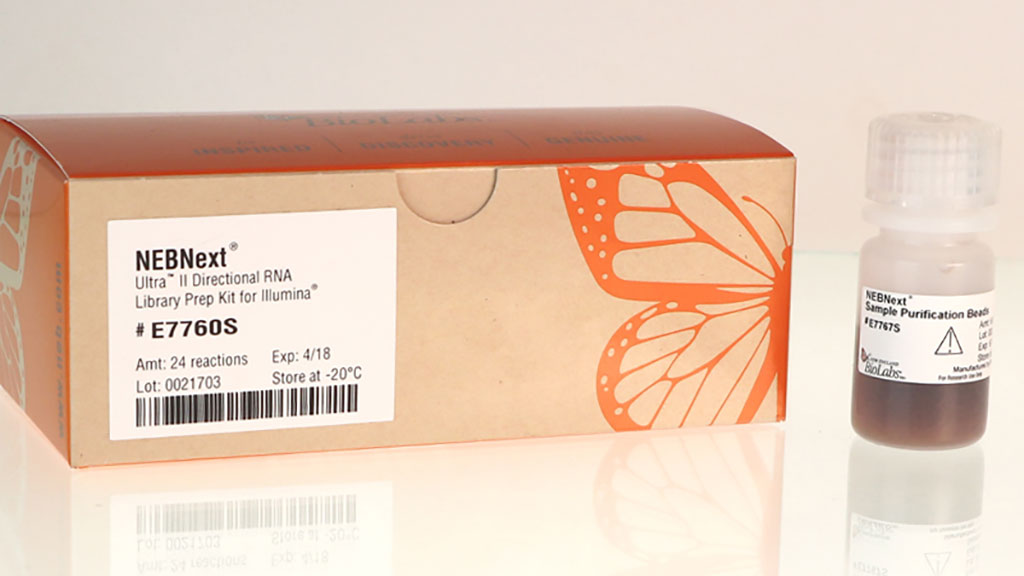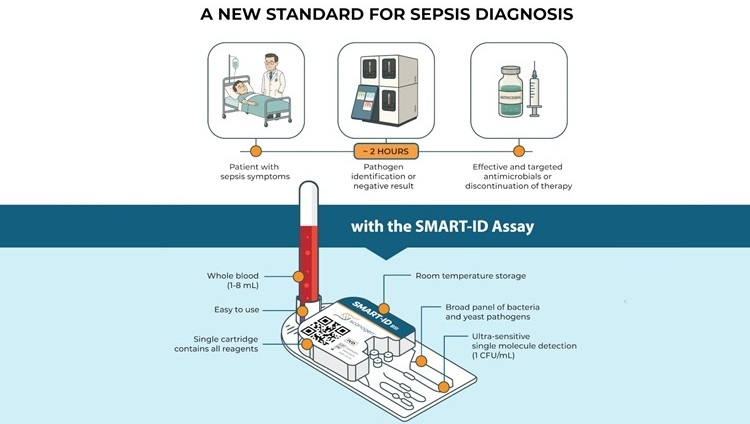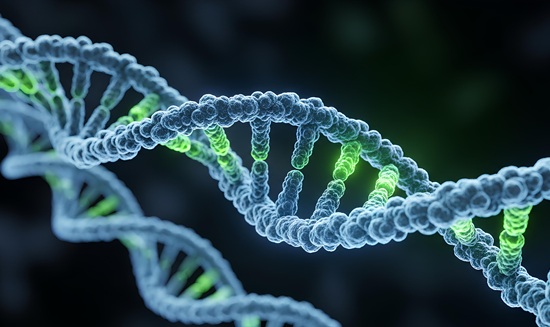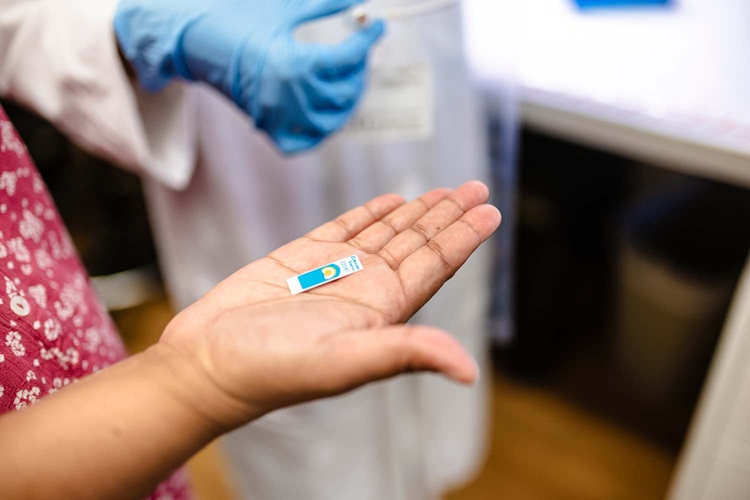Biomarkers Predict Lyme Disease Post-Treatment Prognosis
|
By LabMedica International staff writers Posted on 06 Dec 2022 |

Testing and diagnosis of the earliest stages of Lyme Disease (LD) have proven to be difficult or unreliable. The universally accepted diagnostic test for LD is a positive enzyme-linked immunosorbent assay (ELISA) followed by a positive western blot for immunoglobulin M (IgM) and IgG.
Antibiotic treatment includes a dosing regimen of doxycycline, amoxicillin, ceftriaxone, or cefotaxime, dependent on patient age and displayed symptoms. Even when the disease is clearly diagnosed and properly treated, about 10%–20% of affected individuals do not respond completely and develop prolonged symptoms, a condition termed post-treatment LD (PTLD).
A team of medical scientists at the Icahn School of Medicine at Mount Sinai (New York, NY, USA) and their colleagues enrolled 152 individuals (66 females and 86 males) with symptoms of post-treatment LD (PTLD) to profile their peripheral blood mononuclear cells (PBMCs) with RNA sequencing (RNA-seq). Their average age was 47.27 ±15.85. The acute LD cohort consisted of 72 patients made of 31 females and 41 males and their average age was 47.19 ±15.68.
PBMCs were isolated from fresh whole blood using Ficoll. RNA was extracted from 107 PBMCs using RLT Lysis Buffer (Qiagen, Germantown, MD, USA). The NEBNext Ultra II Directional RNA Library Prep Kit (New England Biolabs, Ipswich, MA, USA) was used to generate RNA-seq libraries. Poly A RNAs were isolated from total RNAs using NEBNext Poly(A) Magnetic Isolation Module and then fragmented for cDNA synthesis. The prepared samples were processed by an Illumina HiSeq2500 (Illumina, San Diego, CA, USA).
The investigators observe that most individuals with PTLD have an inflammatory signature that is distinguished from the acute LD group. By distilling gene sets from this study with gene sets from other sources, they identified a subset of genes that are highly expressed in the cohorts, but are not already established as biomarkers for inflammatory response or other viral or bacterial infections. They further reduce this gene set by feature importance to establish an mRNA biomarker set capable of distinguishing healthy individuals from those with acute LD or PTLD as a candidate for translation into an LD diagnostic. The 35 gene profile included TTC26, TTC23, IFT 74, IFT81, IFT85, ARL13B, CEP83, CEP162, CEP76, and CEP44. CEP83 encodes a protein involved in centrosome docking on the plasma membrane and is critical for primary cilia and immune synapse formation.
The authors concluded that their study produced a gene-expression profile for PTLD. This is just a first step that requires confirmation for diagnosis of PTLD. Gene expression can support the diagnosis of PTLD in individuals with a history of prior diagnosed and treated LD and persistent post-treatment symptoms. The study was published on November 15, 2022 in the journal Cell Reports Medicine.
Related Links:
Icahn School of Medicine at Mount Sinai
Qiagen
New England Biolabs
Illumina
Latest Molecular Diagnostics News
- Blood Biomarker Improves Early Brain Injury Prognosis After Cardiac Arrest
- Biomarkers Could Identify Patients at High Risk of Severe AKI After Major Surgery
- CLIA Test Identifies Head and Neck Cancer Recurrence from Post-Surgical Lymphatic Fluid
- New 15-Minute Hepatitis C Test Paves Way for Same-Day Treatment
- Ovarian Cancer Assay Outperforms Traditional Tests in Early Detection
- Ultrasensitive Method Detects Low-Frequency Cancer Mutations
- Blood Test Enables Non-Invasive Endometriosis Detection
- New Blood Biomarkers Help Diagnose Pregnancy-Linked Liver Complication
- Simple Urine Test to Revolutionize Bladder Cancer Diagnosis and Treatment
- Blood Test to Enable Earlier and Simpler Detection of Liver Fibrosis
- Genetic Marker to Help Children with T-Cell Leukemia Avoid Unnecessary Chemotherapy
- Four-Gene Blood Test Rules Out Bacterial Lung Infection
- New PCR Test Improves Diagnostic Accuracy of Bacterial Vaginosis and Candida Vaginitis
- New Serum Marker-Editing Strategy to Improve Diagnosis of Neurological Diseases
- World’s First Genetic Type 1 Diabetes Risk Test Enables Early Detection
- Blood Test to Help Low-Risk Gastric Cancer Patients Avoid Unnecessary Surgery
Channels
Clinical Chemistry
view channel
POC Breath Diagnostic System to Detect Pneumonia-Causing Pathogens
Pseudomonas aeruginosa is a major cause of hospital-acquired and ventilator-associated pneumonia, particularly in lung transplant recipients and patients with structural lung disease. Its ability to form... Read more
Online Tool Detects Drug Exposure Directly from Patient Samples
Doctors often rely on patient interviews and medical records to determine what medications a person has taken, but this information is frequently incomplete. People may forget drugs they used, take over-the-counter... Read moreHematology
view channel
MRD Tests Could Predict Survival in Leukemia Patients
Acute myeloid leukemia is an aggressive blood cancer that disrupts normal blood cell production and often relapses even after intensive treatment. Clinicians currently lack early, reliable markers to predict... Read more
Platelet Activity Blood Test in Middle Age Could Identify Early Alzheimer’s Risk
Early detection of Alzheimer’s disease remains one of the biggest unmet needs in neurology, particularly because the biological changes underlying the disorder begin decades before memory symptoms appear.... Read more
Microvesicles Measurement Could Detect Vascular Injury in Sickle Cell Disease Patients
Assessing disease severity in sickle cell disease (SCD) remains challenging, especially when trying to predict hemolysis, vascular injury, and risk of complications such as vaso-occlusive crises.... Read more
ADLM’s New Coagulation Testing Guidance to Improve Care for Patients on Blood Thinners
Direct oral anticoagulants (DOACs) are one of the most common types of blood thinners. Patients take them to prevent a host of complications that could arise from blood clotting, including stroke, deep... Read moreImmunology
view channelBlood Test Could Detect Adverse Immunotherapy Effects
Immune checkpoint inhibitors have transformed cancer treatment, but they can also trigger serious immune-related adverse events that damage healthy organs and may become life-threatening if not detected early.... Read more
Routine Blood Test Can Predict Who Benefits Most from CAR T-Cell Therapy
CAR T-cell therapy has transformed treatment for patients with relapsed or treatment-resistant non-Hodgkin lymphoma, but many patients eventually relapse despite an initial response. Clinicians currently... Read moreMicrobiology
view channel
Blood-Based Diagnostic Method Could Identify Pediatric LRTIs
Lower-respiratory tract infections (LRTIs) are a leading cause of illness and death worldwide, and pneumonia is the leading infectious cause of death in children under five, claiming the lives of over... Read more
Rapid Diagnostic Test Matches Gold Standard for Sepsis Detection
Sepsis kills 11 million people worldwide every year and generates massive healthcare costs. In the USA and Europe alone, sepsis accounts for USD 100 billion in annual hospitalization expenses.... Read moreRapid POC Tuberculosis Test Provides Results Within 15 Minutes
Tuberculosis remains one of the world’s deadliest infectious diseases, and reducing new cases depends on identifying individuals with latent infection before it progresses. Current diagnostic tools often... Read more
Rapid Assay Identifies Bloodstream Infection Pathogens Directly from Patient Samples
Bloodstream infections in sepsis progress quickly and demand rapid, precise diagnosis. Current blood-culture methods often take one to five days to identify the pathogen, leaving clinicians to treat blindly... Read morePathology
view channel
Rapid Low-Cost Tests Can Prevent Child Deaths from Contaminated Medicinal Syrups
Medicinal syrups contaminated with toxic chemicals have caused the deaths of hundreds of children worldwide, exposing a critical gap in how these products are tested before reaching patients.... Read more
Tumor Signals in Saliva and Blood Enable Non-Invasive Monitoring of Head and Neck Cancer
Head and neck cancers are among the most aggressive malignancies worldwide, with nearly 900,000 new cases diagnosed each year. Monitoring these cancers for recurrence or relapse typically relies on tissue... Read more
Common Health Issues Can Influence New Blood Tests for Alzheimer’s Disease
Blood-based tests for Alzheimer’s disease are transforming diagnosis by offering a simpler alternative to spinal taps and brain imaging. However, many people evaluated at memory clinics also live with... Read more
Blood Test Formula Identifies Chronic Liver Disease Patients with Higher Cancer Risk
Chronic liver disease affects millions worldwide and can progress silently to hepatocellular carcinoma (HCC), one of the deadliest cancers globally. While surveillance guidelines exist for patients with... Read moreTechnology
view channel
Machine Learning Models Diagnose ALS Earlier Through Blood Biomarkers
Amyotrophic lateral sclerosis (ALS) is a rapidly progressive neurodegenerative disease that is notoriously difficult to diagnose in its early stages. Early symptoms often overlap with other neurological... Read more
Artificial Intelligence Model Could Accelerate Rare Disease Diagnosis
Identifying which genetic variants actually cause disease remains one of the biggest challenges in genomic medicine. Each person carries tens of thousands of DNA changes, yet only a few meaningfully alter... Read moreIndustry
view channel
BD and Penn Institute Collaborate to Advance Immunotherapy through Flow Cytometry
BD (Becton, Dickinson and Company, Franklin Lakes, NJ, USA) has entered into a strategic collaboration with the Institute for Immunology and Immune Health (I3H, Philadelphia, PA, USA) at the University... Read more



















